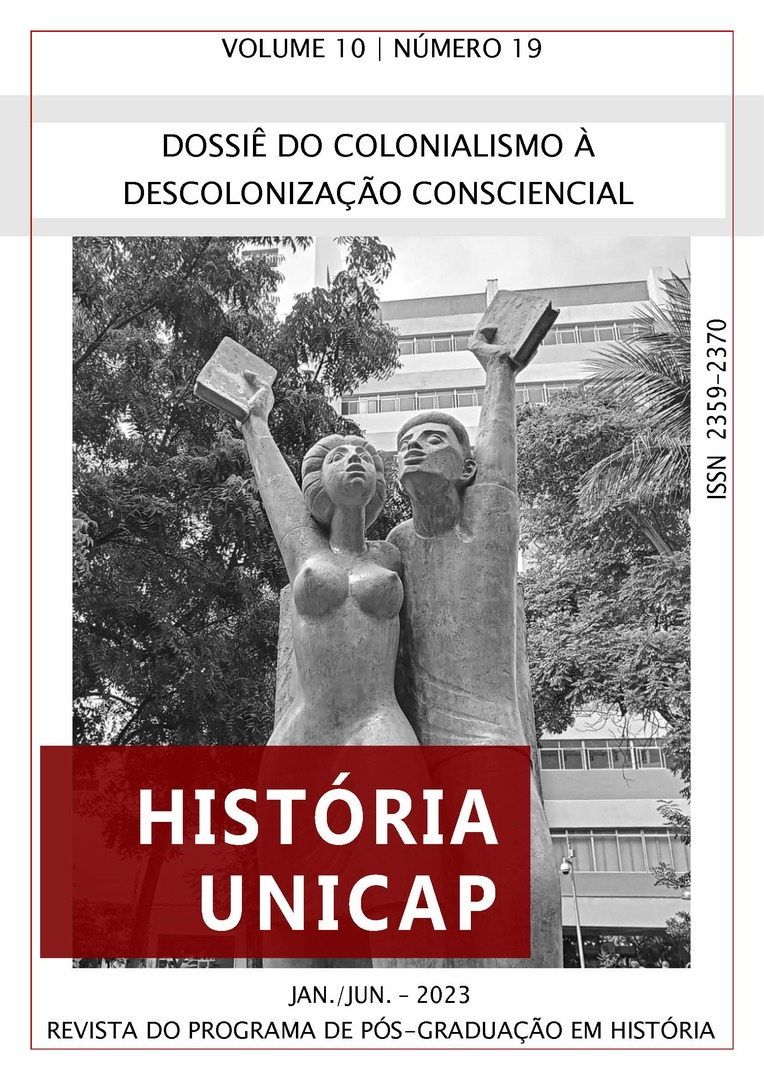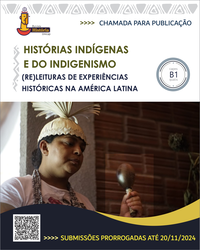Social constructions of childhood
dialogues between Environmental psychology, Geography, and History
DOI:
https://doi.org/10.25247/hu.2023.v10n19.p135-149Keywords:
Childhood, Space-individual relationship, MultiplicityAbstract
The intersection between Environmental Psychology, Geography of Childhood, and History of Childhood reveals the importance of understanding the relationship between space and the individual, especially in the context of children and adolescents. These fields of study recognize the mutual influence between people and the environments they occupy, emphasizing the need to consider the particularities and singularities of these subjects. The Geography of Childhood emerges as a transdisciplinary field, drawing contributions from sociology and the history of childhood, focusing on the social construction of childhood with attention to social divisions. In turn, Environmental Psychology emphasizes the relationship between the individual and the physical space they occupy, considering people's needs and behaviors. The History of Childhood, as a living and constantly revisited science, seeks to understand the trajectory of children over time, engaging in dialogue with other disciplines and having a commitment to the guarantee of rights. In the context of marginalized childhoods, understanding space and its influences becomes crucial to grasp the experiences, challenges, and development of individuals. These fields of study seek to contribute both in the academic realm and in the formulation of public policies and the promotion of social transformations, recognizing the importance of understanding and addressing the needs of children and adolescents.
Downloads
References
ABRAMOWICZ, A.; MORUZZI, A. B. Infância na contemporaneidade: questões para os estudos sociológicos da infância (Childhood in the contemporary world: questions for the sociological studies of childhood). Crítica Educativa, 13 fev. 2017. v. 2, n. 2, p. 25. Disponível em: <http://www.criticaeducativa.ufscar.br/index.php/criticaeducativa/article/view/94>. Acesso em: 18 jun. 2020.
ARCHARD, D. Children: Rights and Childhood. [S.l.]: Routledge, 2014.
ARIÈS. História Social da Criança e da Família. 2a edição ed. Rio de Janeiro: LTC, 1981.
BRAGA, D. De A. R. A infância como objeto da história um balanço historiográfico. Revista USP, 2015. v. 10, p. 26. Disponível em: <http://www.revistas.usp.br/ran/article/view/123935>.
LOPES, J. J. M.; COSTA, B. M. F. Geografia da infância: onde encontramos as crianças? [s.d.]. p. 18.
MARCHI, R. As Teorias da Socialização e o Novo Paradigma para os Estudos Sociais da Infância. Educação & Realidade, 2009. v. 34, n. 1. Disponível em: <https://seer.ufrgs.br/educacaoerealidade/article/view/8467>. Acesso em: 15 out. 2021.
MELO, R. G. C. De. Psicologia ambiental: uma nova abordagem da psicologia. Psicologia USP, 1991. v. 2, n. 1–2, p. 85–103. Disponível em: <http://pepsic.bvsalud.org/scielo.php?script=sci_abstract&pid=S1678-51771991000100008&lng=pt&nrm=iso&tlng=pt>. Acesso em: 1o jul. 2023.
PERROT, M. Figuras e papéis. Em: PERROT, M. (Org.). História da vida privada 4 - da Revolução Francesa à Primeira Guerra. São Paulo: Companhia das Letras, 2009.
PRIORE, M. Del. História das crianças no Brasil. 7a edição ed. São Paulo, SP: Editora Contexto, 1997.
TUAN, Y.-F. Geografia Humanística. Em: CHRISTOFOLETTI, A. (Org.). Perspectivas Da Geografia. São Paulo: DIFEL, 1982.
Downloads
Published
Issue
Section
License
Copyright (c) 2023 HISTÓRIA UNICAP

This work is licensed under a Creative Commons Attribution 4.0 International License.
Concedo a Revista História Unicap o direito de primeira publicação da versão revisada do meu artigo, licenciado sob a Licença Creative Commons Attribution (que permite o compartilhamento do trabalho com reconhecimento da autoria e publicação inicial nesta revista).
Afirmo ainda que meu artigo não está sendo submetido a outra publicação e não foi publicado na íntegra em outro periódico e assumo total responsabilidade por sua originalidade, podendo incidir sobre mim eventuais encargos decorrentes de reivindicação, por parte de terceiros, em relação à autoria do mesmo.
Também aceito submeter o trabalho às normas de publicação da Revista História Unicap acima explicitadas.















 A História Unicap está licenciada com uma licença
A História Unicap está licenciada com uma licença 